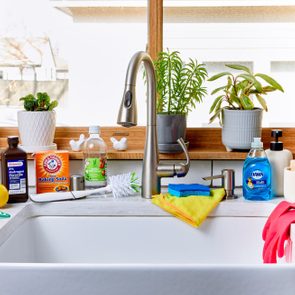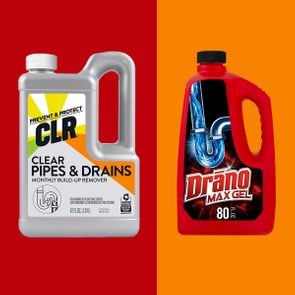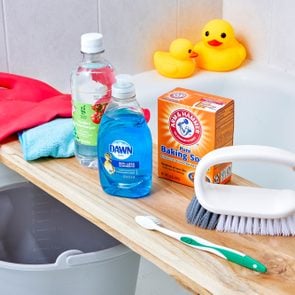How to Clean a Shower Head (and Why You Really Need To)
Updated: Apr. 18, 2024
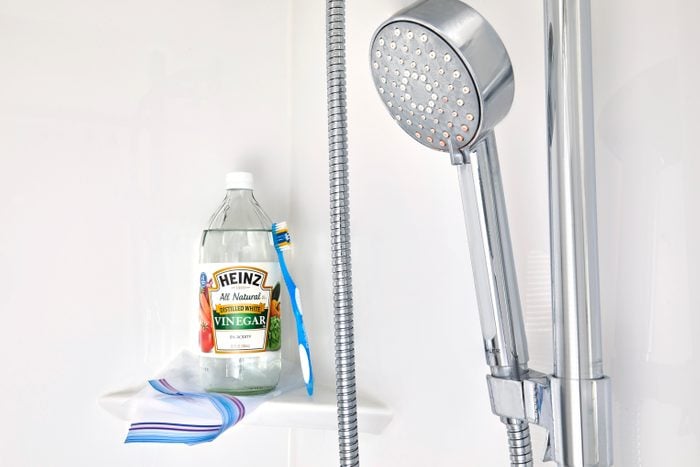
Improve your shower's water flow and eliminate gross buildup with these simple, step-by-step instructions for how to clean a shower head
Some chores on the cleaning schedule seem simpler than others. Laundry? Check. Bedrooms? Check. Bathroom? Almost there. You’ve managed to wipe down counters and scrub the toilet. But do you know how to clean a shower head? You should, according to cleaning-for-health expert Allen Rathey, director of the Indoor Health Council.
“Minerals can reduce or block the water flow, and microbes can be released from biofilms into your shower water,” Rathey says. Yuck. But learning how to clean buildup in your bathroom doesn’t have to be difficult.
We consulted Rathey and cleaning expert Melissa Maker, founder of Clean My Space, to help you get your shower head sparkling and sprinkling like new. And bonus: We’ve included pro-approved methods and both quick-clean and deep-cleaning tips. Cleaning your shower head is such an important part of cleaning a bathroom. So what are you waiting for? Here’s what you need to know.
Get Reader’s Digest’s Read Up newsletter for more cleaning, humor, travel, tech and fun facts all week long.
About the experts
Reviewed for accuracy by: Ann Russell, TikTok’s “cleaning auntie” and the author of How to Clean Everything. |
How to clean a shower head with vinegar
Both Maker and Rathey recommend vinegar as a natural solution for a slow, grimy, mineral-blocked shower head. Vinegar is inexpensive, readily available and safe, and Rathey says it’s the first thing you should reach for when cleaning your shower head.
“Mineral deposits can be softened and dissolved by soaking in a mild acid, such as pure white vinegar,” Rathey says. Its natural acidity breaks down hard-water minerals like calcium and magnesium with ease. Plus, it’s a natural disinfectant.
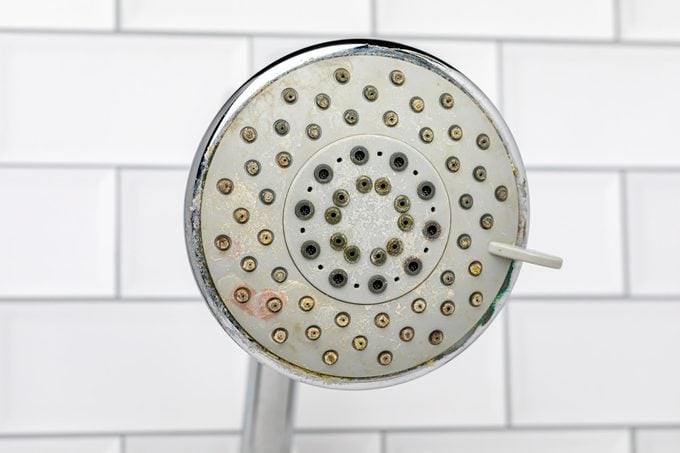
Using vinegar to clean a shower head is pretty painless. However, thanks to biofilm, there is some elbow grease required. Biofilm is a protective slime produced by microbes that cannot be removed without scrubbing, Rathey says. For a deep clean, you’ll want to remove the shower head from the arm for easier scrubbing and better access to both the pipe and the interior of the shower head. The following professional cleaning tips focus on deep-cleaning a shower head and should be done at least two times a year, but preferably once every four months.
Supplies you’ll need
- White vinegar
- Bucket, bowl or pan large enough to submerge shower head
- Old toothbrush
- Adjustable wrench
- Microfiber cloth or old towel
Directions
- Remove the shower head using a wrench.
- Place shower head in container and cover with vinegar.
- Soak overnight.
- After soaking, scrub the shower head with the toothbrush to remove deposits loosened by the vinegar. If individual spray holes are blocked, poke them out with a small tool, like a toothpick.
- Dunk your toothbrush in the vinegar and scrub the shower arm and connections, “including up a bit into the water supply pipe,” Rathey says.
- Rinse shower head and arm inside and out to flush out minerals. Reattach.
Pro tip: When removing the shower head, try wrapping the nut and shower arm with a microfiber cloth or towel to avoid scratching the hardware.
How to quick-clean a shower head with vinegar
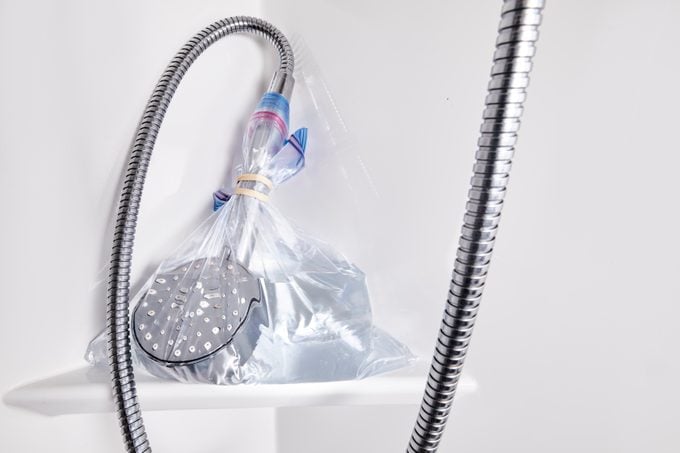
If you don’t have the time to wait overnight for your shower head to run clear, try this quick substitute. To do the job quickly, follow these step-by-step instructions from Maker for how to clean a shower head with vinegar and a plastic kitchen storage bag. It only takes an hour or so.
Supplies you’ll need
- White vinegar
- Gallon-size zipper bag
- Rubber band or zip tie
- Old toothbrush
Directions
- Fill the plastic bag about halfway with white vinegar. (If you have a large shower head, you may need a larger bag.)
- Wrap the vinegar-filled bag around the shower head so that any place where water exits is completely submerged in vinegar.
- Hold the bag in place by snapping a rubber band around it, affixing it to the shower head’s arm.
- Wait approximately one hour to let the vinegar eat away at any hard-water deposits or buildup.
- Remove the bag and scrub the shower head with a toothbrush to clear up any stubborn residue.
- Rinse by simply running the shower for a few minutes with hot water.
How to clean a shower head with lemon
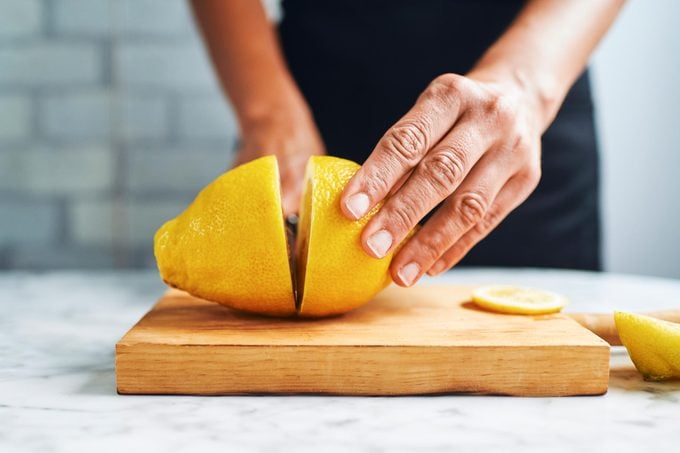
Maybe you ran out of vinegar on cleaning day or you prefer a natural product, and lemons are an alternative that smell particularly fresh and zesty. Like vinegar, the acid in lemon juice naturally makes quick work of any buildup on shower heads. But while this citrus-based TikTok cleaning hack is popular, you’ll want to use caution: The sugar in lemons can attract ants, and any traces of peel and pulp that get left behind can rot and smell. Be extra careful to remove all traces when wiping clean.
Supplies you’ll need
- 1 large lemon
- Gallon-size plastic bags
- Rubber band or zip ties
- Old toothbrush
Directions
- Choose a lemon that feels heavy for its size, an indicator of plenty of juice inside.
- Slice the lemon in half with a sharp knife.
- Use the cut sides to thoroughly scrub the shower head, concentrating your efforts on any visible buildup.
- Wrap a plastic bag containing the lemon around the shower head. Position the lemon halves’ cut sides against the faucet.
- Secure in place with a rubber band.
- Leave it for at least an hour.
- Once the hour is up, remove the bag.
- Squeeze the lemon to release excess juice onto the shower head.
- Scrub with a toothbrush to remove mineral buildup, using a toothpick if needed for blocked spray nozzles.
- Rinse by simply running the shower for a few minutes with hot water.
Pro tip: For really gunky shower heads, you can leave the lemon in place overnight.
How to clean a shower head with CLR
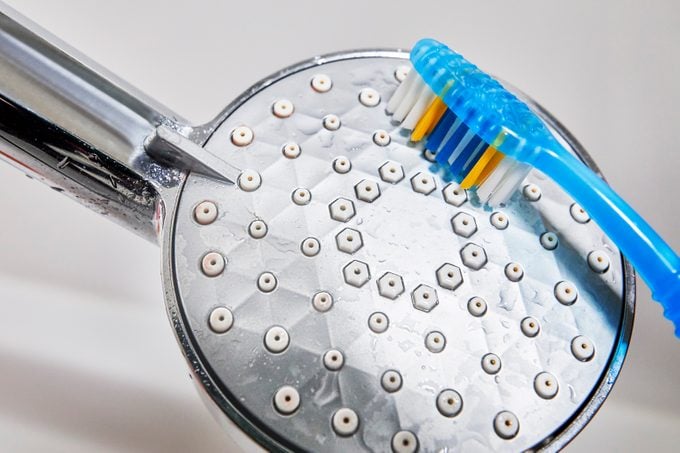
Rathey says another option for cleaning a slow or dirty shower head is CLR, a commercial cleaner named because it dissolves calcium, limescale and rust. Like vinegar, it’s an acidic cleaner, but it’s stronger than vinegar and can be more effective, depending on the level of buildup. It’s also faster. If you’re worried about using harsh chemicals when cleaning your shower head, Rathey says CLR “contains stronger acids than vinegar but is still considered a Safer Choice product” by the U.S. Environmental Protection Agency. Of course, always follow the directions on the label for safe use.
What you’ll need
- CLR Calcium, Lime and Rust Remover
- Bucket, pan or large bowl
- Old toothbrush
- Adjustable wrench
- Microfiber cloth or old towel
- Latex or rubber gloves
Directions
- Remove the shower head as you would for a deep-clean.
- Pour an equal mix of CLR and water into a container. Make sure it’s deep enough to cover the shower spray holes.
- Put on protective gloves.
- Dunk the shower head into the CLR mixture for two to three minutes, or according to label directions.
- Remove the shower head and scrub with a toothbrush to remove mineral buildup, using a toothpick if needed for blocked spray nozzles.
- Rinse shower head well and reattach.
FAQs
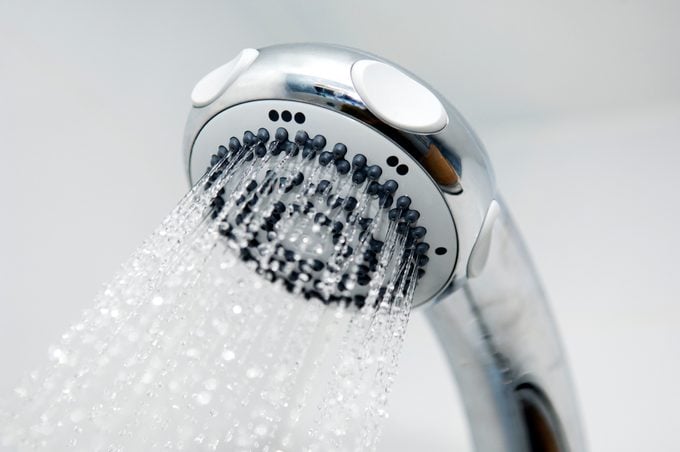
How often should you clean your shower head?
Ideally, you should clean the shower head once a month to remove mineral buildup. A deep-clean should be done at least two times a year, but preferably once every four months. This ensures a cleaner shower head and a more enjoyable showering experience.
How do you remove sediment and buildup from shower heads?
Soaking with vinegar or other limescale-removing cleaners, combined with a little elbow grease and scrubbing, removes mineral buildup. For sediment stuck inside the shower head, follow the deep-cleaning instructions and remove the shower head and rinse it out. For clogged spray nozzles, use a toothpick to clear them before rinsing.
Can you clean a shower head with bleach?
No. Bleach is a powerful corrosive and will harm most shower head and fixture materials like nickel, chrome and stainless steel.
Why trust us
At Reader’s Digest, we’re committed to producing high-quality content by writers with expertise and experience in their field, in consultation with relevant, qualified experts. For this piece, Jonna Gallo Weppler tapped her experience as an award-winning service journalist with 20-plus years covering home and cleaning. Then cleaning expert Ann Russell, author of How to Clean Everything, gave it a rigorous review to ensure that all information is accurate and offers the best possible advice to readers. For this piece, we relied on reputable primary sources, including cleaning and health experts and reputable government agencies. We verified all facts and data and backed them with credible sourcing, and we will revisit them over time to ensure they remain accurate and up to date. Read more about our team, our contributors and our editorial policies.
Sources:
- Melissa Maker, founder of Clean My Space; interview, Nov. 2021
- Allen Rathey, director of the Indoor Health Council; email interview, Dec. 28, 2023
- U.S. Environmental Protection Agency: “Safer Choice”
Additional reporting by Wendy Rose Gold.

